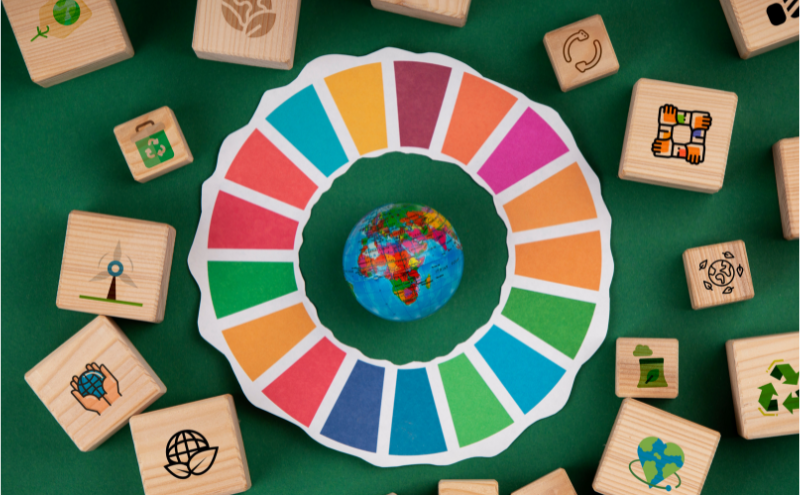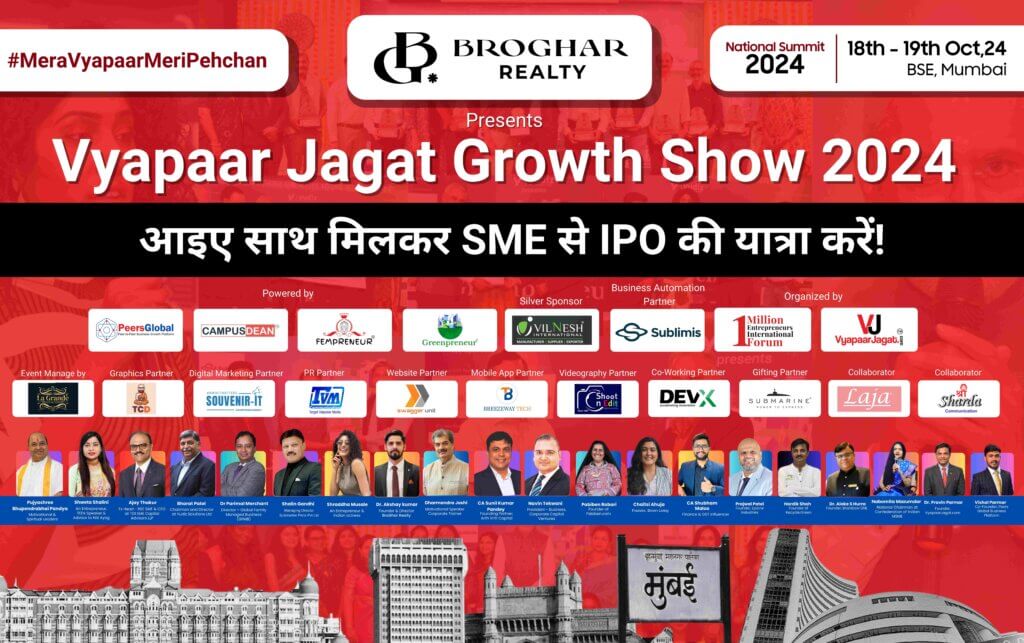
In today’s rapidly evolving world, entrepreneurs are emerging as catalysts for driving positive change by aligning their initiatives with the United Nations’ Sustainable Development Goals (SDGs). These 17 global goals serve as a transformative roadmap for creating a more sustainable and equitable future by 2030. Driven by purpose and innovation, entrepreneurs understand the profound impact of considering the causal relationships between SDGs and underlying targets. Their initiatives create a powerful ripple effect, touching multiple SDGs and fostering a holistic approach to sustainable development. In this article, we delve into the synergy of SDGs, explore the targets of SDG 12 (Responsible Consumption and Production), and showcase inspiring examples of entrepreneurs whose ripple effects are making a difference.
Unleashing the Ripple Effect of SDGs
The interconnected nature of SDGs reveals that progress in one goal has a ripple effect on others. Entrepreneurs, armed with this knowledge, strategically plan initiatives that harness this ripple effect, magnifying their positive impact. For instance, a company focused on providing clean energy solutions (SDG 7) not only contributes to SDG 7 but also influences poverty reduction (SDG 1), education (SDG 4), and health (SDG 3). Understanding these causal relationships empowers entrepreneurs to drive sustainable impact beyond the boundaries of a single SDG.
SDG 12 – Responsible Consumption and Production
Let us explore a bit on SDG 12, “Responsible Consumption and Production,” which lies at the heart of sustainable development. Entrepreneurs who embrace this goal design initiative that promotes eco-friendly practices, reduce waste, and foster a circular economy. By doing so, they create a ripple effect that extends across multiple SDGs. Their responsible consumption initiatives positively impact SDG 13 (Climate Action) by reducing carbon footprints, SDG 11 (Sustainable Cities and Communities) through sustainable packaging, and SDG 9 (Industry, Innovation, and Infrastructure) by driving resource-efficient manufacturing.
Let us look at some examples, which are hypothetical and created for illustrative purposes to showcase how companies could embrace SDG 12 initiatives. They do not represent real companies or initiatives but are intended to demonstrate the types of actions and approaches that entrepreneurs can take to promote responsible consumption and production.
Sustainable Production: SDG 12 calls for industries to adopt sustainable production practices that prioritize environmental preservation and resource efficiency. This can be achieved through innovations in technology, green manufacturing processes, and the use of renewable energy sources. Companies committed to sustainable production aim to reduce their carbon footprint, minimize waste generation, and responsibly manage resources.
Example 1: Sustainable Fashion Manufacturing – A fashion company embraces sustainable production by using organic and eco-friendly fabrics, reducing water usage in their dyeing processes, and ensuring fair labor practices throughout their supply chain. By incorporating recycled materials into their designs and offering clothing repair services, the company encourages circularity, extending the lifespan of their products and reducing overall waste.
Example 2: Clean Energy Manufacturing Plant – A manufacturing plant adopts clean energy solutions by installing solar panels and using energy-efficient machinery. By transitioning from fossil fuels to renewable energy sources, the plant significantly reduces its greenhouse gas emissions and contributes to SDG 7 (Affordable and Clean Energy) while aligning with SDG 12’s sustainable production principles.
Responsible Consumption: Responsible consumption involves encouraging individuals to make conscious and ethical choices as consumers. It includes reducing overconsumption, supporting sustainable brands, and opting for products with lower environmental impacts. Companies can play a crucial role in promoting responsible consumption by offering sustainable products, transparent labeling, and educational campaigns.
Example 3: Eco-Friendly Retail Chain – A retail chain commits to responsible consumption by offering a curated selection of eco-friendly and ethically sourced products. They encourage customers to choose products with eco-labels and provide information on the environmental impact of each item. Through awareness campaigns and recycling programs, the retail chain empowers consumers to make informed and sustainable choices.
Example 4: Zero-Waste Grocery Store – An entrepreneur opens a zero-waste grocery store where customers can buy unpackaged, bulk goods using their reusable containers. By eliminating single-use plastics and encouraging customers to buy only what they need, the store promotes responsible consumption and reduces plastic waste. This initiative aligns with SDG 12’s target of reducing waste generation through prevention and reduction.
Circular Economy Initiatives: The circular economy is at the core of SDG 12, as it aims to design out waste and keep resources in use for as long as possible. Companies that embrace circular economy principles adopt innovative business models such as product-as-a-service, recycling and upcycling programs, and sustainable supply chain management.
Example 5: Product-as-a-Service Model – An electronics company introduces a product- as-a-service model for smartphones. Instead of selling smartphones, they offer customers the option to lease the latest models. At the end of the lease, customers can return the phone, and the company refurbishes and upgrades the devices for reuse, minimizing electronic waste and promoting a circular economy.
Example 6: Closed-Loop Recycling Program – A beverage company implements a closed-loop recycling program for their plastic bottles. They collect used bottles from consumers, recycle them into new bottles, and use the recycled material for manufacturing. By closing the loop and reducing the need for new plastic, the company supports SDG 12’s target of reducing waste generation and promoting responsible consumption.
SDG 12, “Responsible Consumption and Production,” stands as a pivotal goal for achieving a more sustainable world. By encouraging sustainable production practices, responsible consumption choices, and embracing circular economy principles, entrepreneurs play a critical role in driving transformative change. Through innovative initiatives and responsible business practices, entrepreneurs demonstrate their commitment to SDG 12 and its far-reaching impact across multiple goals. As these examples showcase, entrepreneurs are catalysts for change, leading the way toward a more sustainable and prosperous future for all.
Inspirational Entrepreneurs Making Waves
Real-world entrepreneurs are championing sustainability and exemplifying the power of the ripple effect:
GreenTech Innovations – Pioneering Urban Mobility Solutions
GreenTech Innovations provides eco-friendly transportation solutions (SDG 11). Their ripple effect extends to SDG 7 (Affordable and Clean Energy) through electric mobility, SDG 13 (Climate Action) by reducing emissions, and SDG 3 (Good Health and Well- being) by promoting cleaner air.
EcoFashion Co. – Fashioning a Sustainable Future
EcoFashion Co. prioritizes ethical fashion and responsible production (SDG 12). Their
ripple effect empowers women artisans (SDG 5), contributing to SDG 1 (No Poverty) and SDG 8 (Decent Work and Economic Growth).
GreenTech Solutions – Nurturing Biodiversity
GreenTech Solutions invests in biodiversity conservation and reforestation (SDG 15). Their ripple effect positively impacts SDG 13 (Climate Action) and SDG 1 (No Poverty) through employment opportunities in restoration activities.
Entrepreneurs are at the forefront of sustainable change, acting as catalysts for progress. By understanding and embracing the causal relationships between SDGs, their initiatives create a ripple effect, resonating across various goals and domains. Through strategic planning and commitment to responsible consumption and production (SDG 12), entrepreneurs are reshaping industries and societies. As pioneers of sustainable innovation, they inspire others to join the movement, amplifying the ripple effect and paving the way for a brighter, more sustainable future. Together, they prove that the collective impact of interconnected SDGs can create a tidal wave of positive change that transforms the world for generations to come.
In continuation of our series on the transformative impact of entrepreneurs on the Sustainable Development Goals (SDGs), my next article will explore how visionary entrepreneurs are driving social impact by addressing SDGs 1 (No Poverty), 3 (Good Health and Well-being), and 4 (Quality Education). By focusing on initiatives that uplift communities, enhance healthcare, and promote education, let us look at how these entrepreneurs exemplify the potential of business as a force for positive change.


